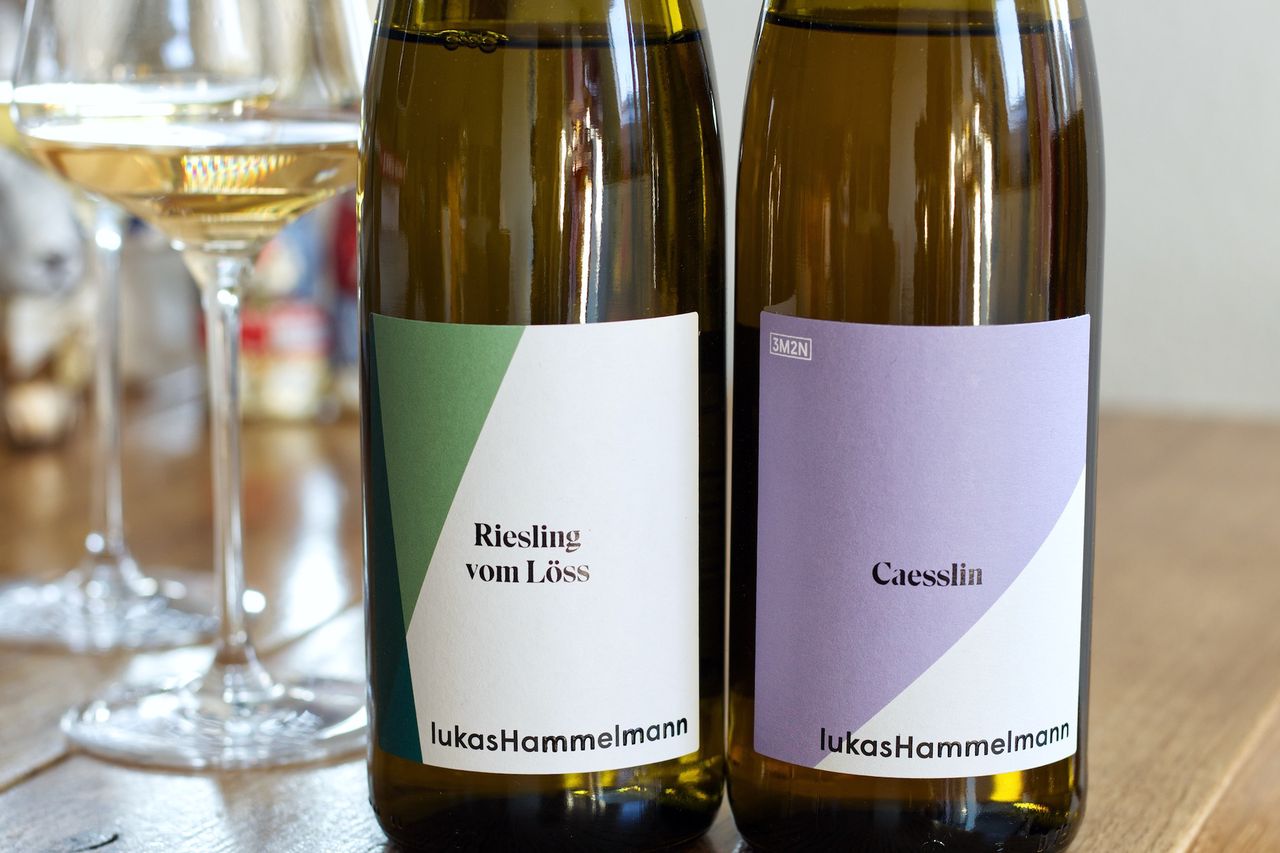Two Bottles Lukas Hammelmann
We drink the first wines from 2019: From Lukas Hammelmann from the Palatinate a Riesling Vom Löss and the Blanc de Noir Caesslin.

Not only in the blog, but altogether these are the first wines from the 2019 vintage in our glasses and indeed the two wines are the first 2019s in the cellar as well. In my opinion, a small interruption of the local series of wines from Württemberg is justified. Strictly speaking, the way to the Palatinate is not longer than, say, to southern Baden from here, but in fact much shorter anyway. We taste two entry level wines from Lukas Hammelmann from Zeiskam, for whom it is not quite clear whether his name is 3M2N, LH Wines - die Zeiskamer Weinmanufaktur or simply Lukas Hammelmann, and what to put in the title of this post. But that doesn’t matter, because all of this is written in different places on the bottles, so I choose how I please. As with the last tasted wine, these are only available in the trade by allocation or in very small quantities. One of the two wines is the Riesling Vom Löss, matured fully in a Moselfuder, and the Blanc de Noirs Caesslin from Pinot Noir, of which a quarter of the wine was aged in barrique.
The Riesling smells yellow-fruity, there is stone fruit, there is some apple, and pineapple. In the mouth the wine is extremely fresh. Sure, it is also super young. On the tongue it feels as if you have just bitten freshly into a sour, green apple. It tingles and pulls. Towards the end, structure and some minerality come to the palate, but at the moment, the wine lives extremely on the juicy, fruity acidity, which invites you to keep drinking. With a little air, notes of citrus fruit, fresh lime, lemon juice are added.
A day later the nose becomes softer and more exotic. There is more minerality on the palate. But the mouthfeel is still dominated by the juiciness and the tangy freshness that comes with the acidity. In this state, this is for me the epitome of balcony wine in summer.
The nose of the Blanc de Noirs is also fruity, but of course very different from Riesling. Berries, especially strawberries are smellable, but without becoming dropy or overly sweet. You can feel the wood in the nose in the background. In the mouth tight and fresh. No comparison to the Riesling, but quite lively. On the back of the tongue, immediately after opening, there is much more structure than we would have suspected from the nose. This is probably where the barrique part shows up. This does the wine good and gives it pretty much what it needs to stay exciting while drinking. The fruit becomes clearer as the evening progresses. Now grape juice is added, some peach and notes of papaya. The structure from the tannin becomes softer. The Caesslin is even easier to drink than the Riesling.
On the second day the aromas are a little more subdued. The better half says crêpes with banana and strawberries. Almost herbal, the wine now comes into the nose. But it always remains fresh and light. Summer wine.
Both wines fit really well to the early summer weather. Especially when you do your part and keep your distance to protect everyone, the two bottles on the balcony in the evening sun are more than adequate. Social distance can also be quite nice. There is more wine for you and with only around 11 percent alcohol you can tolerate one more glass. It’s a lot of fun what we have in our glasses here. But next week there will be Württemberger again. That’s a promise.